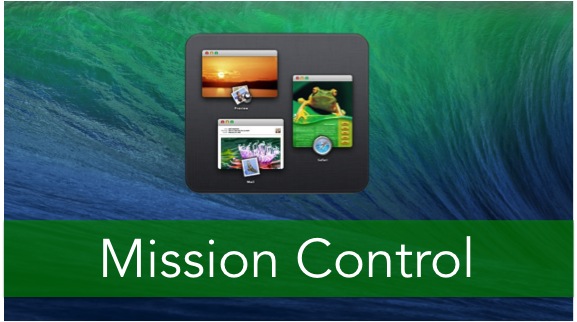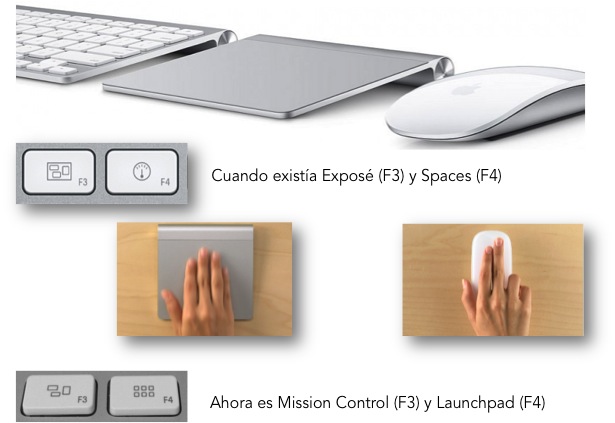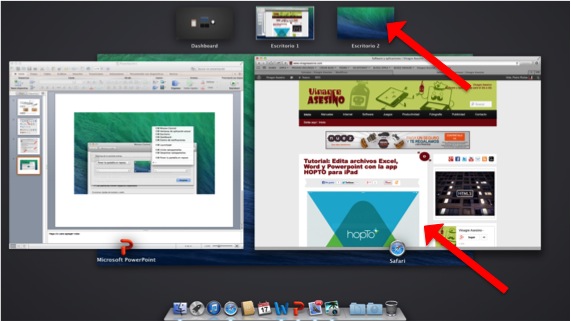Today we continue to explain the fundamentals of the apple operating system OS X Mavericks. In this case, we are going to talk about what Mission Control is and how it works and how to configure it so that you can take advantage of its full potential.
As you know, the Apple system is very complete and in addition to the things that you can see with the naked eye there are many hidden tools and utilities that little by little in Vinagre Asesino we are going to tell you. So, remember that whether you are already an advanced average user or a newcomer to the system, you have a place in this blog.
Our colleague Ángel González has already begun to explain, on the one hand, the ways that currently exist to turn off our Mac with the new OSX Mavericks and, on the other, he has explained a part of how the Dock works and what are the different configurations that you can put on it.
Today in this post we are going to update you on the next utility that this great system has. Is about Mission Control. This tool is not inherited from iOS (iDevices operating system), far from it, it was born from a reinterpretation that Apple made with the launch of OSX Lion, the already known ones Expose y Spaces. Since that version of the system, those from Cupertino merged the operation of Exposé and Spaces into a single tool they called Mission Control, which allows us to see all the windows that we have open on the Mac at that moment on a single screen and manage them at our whim.
What's more, when they launched this new tool, Apple had to modify the screen printing of its keyboards and with each new Mac that was sold a new adapted keyboard was already incorporated; the same happened in laptops.
With this new tool you will also be able to manage the different desktops that you are creating. Each desk can be individually customized and then easily switched from one to the other.
Once we have explained what the new Mission Control is and what it is for, let's see how it works and how we can configure it.
How to access Mission Control?
To access from the keyboard To Mission Control, we just have to press the F3 key, which as you can see comes with a symbol of three rectangles as individual windows.
If you want to call it from a Magic Mouse, it is enough to give two consecutive touches with two fingers on it.
If you do it in the laptop trackpad or Magic TrackPad On a desktop Mac, just swipe 4 fingers up to make it appear and XNUMX fingers down to make it disappear.
What can be configured in Mission Control?
To be able to access the Mission Control settings, just go to System preferences, and in the first row, after the Dock icon, we will find it.
Upon entering the Mission Control configuration panel, we find three well differentiated areas. The first is the area where we will be able to configure the way Mission Control shows us the windows when we call it. In the second area we find the Keyboard and Mouse quick functions, where we will be able to save certain shortcuts so that we do not have to enter this panel every time we want to change it. Finally at the bottom we find a button that tells us Active corners, in which we will be able to configure what we want to happen when taking the little arrow on the desktop to any of the four corners of the screen. In the case of active corners, there is a drop-down in each of the four corners as you can see in the image so that we can select what we want to happen in each of them.
Finally we explain what happens on your Mac screen when you call Mission Control. You will see that the screen changes and shows you all the windows that you have active and also at the top it shows you the number of desktops you have. To be able to create the desktops, just move the mouse arrow to the upper right corner and you will get the option to create a new one. To eliminate them, you place the arrow on the desktop to be eliminated until the symbol to eliminate the cross appears. It should be noted that you can move the desks at will by dragging them one in front of the other.
When you have already created the desktops, you can drag each of the windows below to a different desktop and when you exit Mission Control switch from one desktop to another with a mouse gesture of sliding two fingers at the same time, or 4 fingers at the same time if you do it with the trackpad.
Remember that to be able to call Mission Control you can use the keyboard, the Magic Mouse or the Trackpads, either the laptop or the Magic. Yes, if you are going to use the mouse or trackpad to make that call, you may first have to go to System Preferences and from there to Mouse and Trackpad to verify that these gestures are activated, otherwise, you activate them .
Well, all you have to do is get down to work and continuously use Mission Control to get you started. At first it seems a bit messy, but you'll see that you don't use it well at all.
More information - How to modify some cool aspects of the OS X dock? (I)






